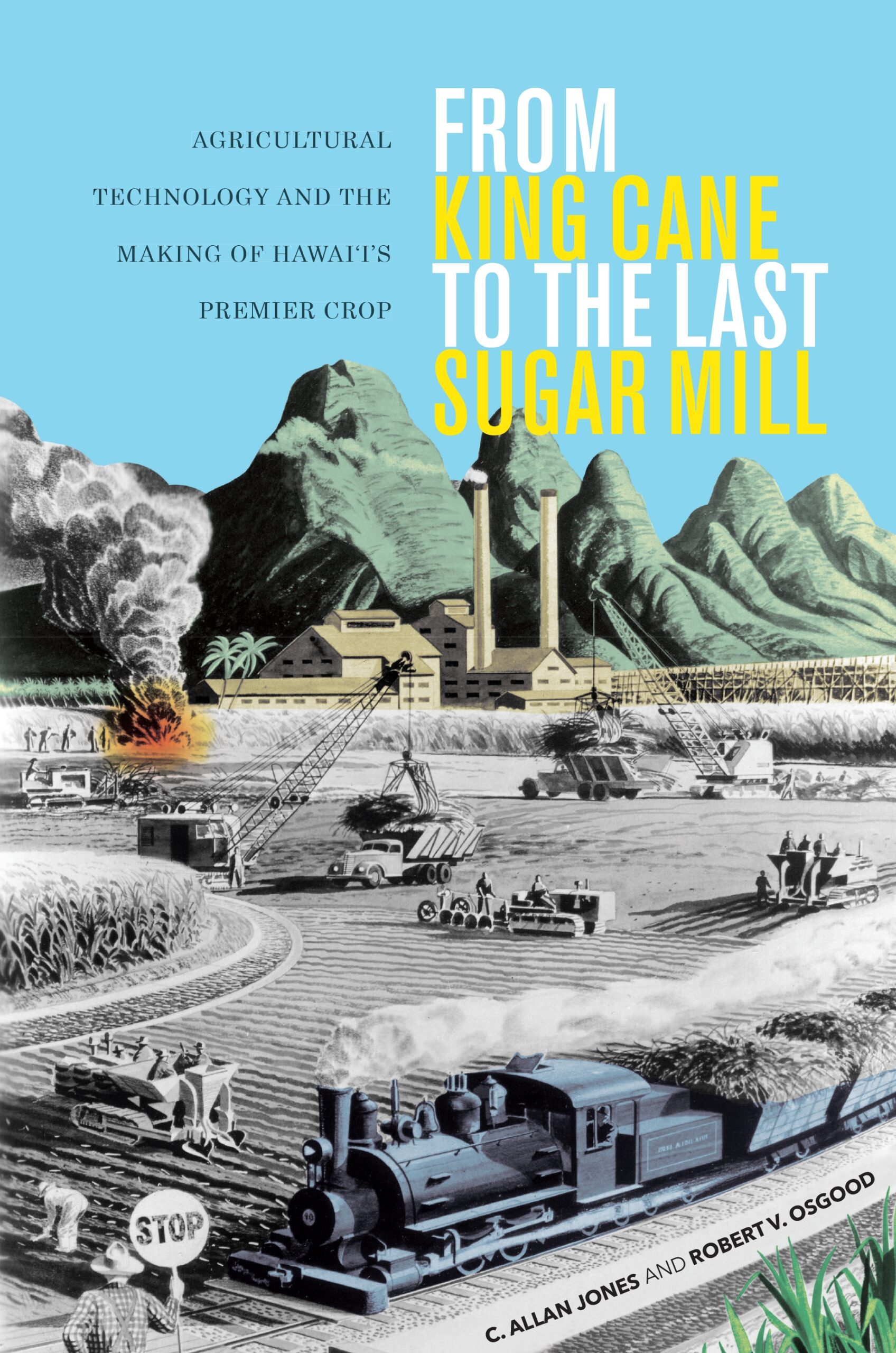From King Cane to the Last Sugar Mill: Agricultural Technology and the Making of Hawaii’s Premier Crop
- About the Book
-
From King Cane to the Last Sugar Mill focuses on the technological and scientific advances that allowed Hawai‘i’s sugar industry to become a world leader and Hawaiian Commercial & Sugar Company (HC&S) to survive into the twenty-first century. The authors, both agricultural scientists, offer a detailed history of the industry and its contributions, balanced with discussion of the enormous societal and environmental changes due to its aggressive search for labor, land, and water.
Sugarcane cultivation in Hawai‘i began with the arrival of Polynesian settlers, expanded into a commercial crop in the mid-1800s, and became a significant economic and political force by the end of the nineteenth century. Hawai‘i’s sugar industry entered the twentieth century heralding major improvements in sugarcane varieties, irrigation systems, fertilizer use, biological pest control, and the use of steam power for field and factory operations. By the 1920s, the industry was among the most technologically advanced in the world. Its expansion, however, was not without challenges. Hawai‘i’s annexation by the United States in 1898 invalidated the Kingdom’s contract labor laws, reduced the plantations’ hold on labor, and resulted in successful strikes by Japanese and Filipino workers. The industry survived the low sugar prices of the Great Depression and labor shortages of World War II by mechanizing to increase productivity. The 1950s and 1960s saw science-driven gains in output and profitability, but the following decades brought unprecedented economic pressures that reduced the number of plantations from twenty-seven in 1970 to only four in 2000. By 2011 only one plantation remained.
Hawai‘i’s last surviving sugar mill, HC&S—with its large size, excellent water resources, and efficient irrigation and automated systems—remained generally profitable into the 2000s. Severe drought conditions, however, caused substantial operating losses in 2008 and 2009. Though profits rebounded, local interest groups have mounted legal challenges to HC&S’s historic water rights and the public health effects of preharvest burning. While the company has experimented with alternative harvesting methods to lessen environmental impacts, HC&S has yet to find those to be economically viable. As a result, the future of the last sugar company in Hawai‘i remains uncertain.
- About the Author(s)
-
C. Allan Jones, Author
C. Allan Jones is senior research scientist for Texas A&M AgriLife Research.Robert V. Osgood, Author
Robert V. Osgood retired in 2003 as vice president and assistant director of research at the Hawai‘i Agriculture Research Center, formerly the Hawaiian Sugar Planters’ Association.
- Reviews and Endorsements
-
- This book is a treasure trove of information on the history of the Hawaiian sugar industry and the role of technology in its development. It is a useful resource for researchers whose inquiry is centred around the history, sociology and anthropology of Hawai’i, the sugar industry generally, sugar technology and agriculture. It is highly valuable as a platform for further studies on labour and a must read for those seeking knowledge on investment patterns in the sugar industry.
—Rita Pemberton, Tropical Agriculture, 93:2 - From King Cane to the Last Sugar Mill is clearly written and organized, and one of its greatest strengths is that through the eyes of agricultural scientists, we can understand the importance of the technological advances Hawai‘I made in the sugar industry to allowing that industry to thrive. . . . Rather than separating technology and culture, Jones and Osgood bring the histories of agricultural technology and societal forces together to develop insights into Hawai‘i’s sugar industry, especially in the later twentieth and early twenty-first centuries.
—Kara Hisatake, University of California, Santa Cruz, Pacific Affairs, 90:1 (March 2017) - [The book is] both a scholarly treatment and an enjoyable read. . . . Using extensive research and careful analysis, the authors attempt to bring balance and objectivity to the subject of sugar in Hawaii.
—Honolulu Star-Advertiser
- This book is a treasure trove of information on the history of the Hawaiian sugar industry and the role of technology in its development. It is a useful resource for researchers whose inquiry is centred around the history, sociology and anthropology of Hawai’i, the sugar industry generally, sugar technology and agriculture. It is highly valuable as a platform for further studies on labour and a must read for those seeking knowledge on investment patterns in the sugar industry.
- Supporting Resources
-





